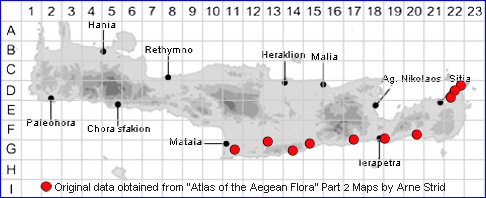
SPECIES DESCRIPTION
ALLIUM CUPANI
Family and Genus:- See- ALLIACEAE/Sect. SCORODON
Common Name:- None
Homotypic Synonyms:- Allium cupani f. typicum. Allium cupani var.
typicum.
Meaning:- Allium (L) The ancient Latin name for garlic.
Cupani (L) Presumably named after collector. (1657-1710), a monk
and naturalist who published on the flora of Sicily.
General description:- Very variable medium to tall bulbous perennial.
Bulb:-
1) 0·7-1·5 cm. diam. narrowly ovoid, outer tunics reticulately fibrous.
Stem:-
1) 9-30 cm.
Leaves:-
1) 3-5, up to 80 x 0·4 mm, sheathing the lower 1/3-3/4 of the stem, glabrous or
pubescent, filiform.
Flowers:-
1) Spathe, 1·5-2 cm, 1-valved, tubular at the base, persistent.
2) Umbel, fastigiate, with 3-15 flowers.
3) Pedicels, up to 40 mm, very unequal.
3) Perianth, cylindrical.
4) Perianth segments, 5·5-9 x 1·5-2 mm, whitish or pink, narrowly oblong, acute to
obtuse.
5) Stamens, included.
a) filaments, c. 5 mm, simple.
b) anthers, yellow.
Fruit:-
1) Capsule, 4 mm.
Key features:-
1) Leaves, sheathing lower 1/2-2/3 of stem.
2) Perianth segments, lanceolate, acute or obtuse.
3) Spathe, 1-valved, entire.
4) Outer tunic, fibrous.
Habitat:- Dry open shrubby vegetation, scrubland vegetation and dry meadows. 0-
1200 m.
Distribution:- Widespread in Greece and the Aegean area, but rare in the west
and lacking on the Ionian Islands. Fairly rare on Crete, known from a few locations
along the S coast and the far northeast.
Flowering time:- Late Apr-July
Photos by:- Stavros Apostolou and Manolis Afrathianakis
